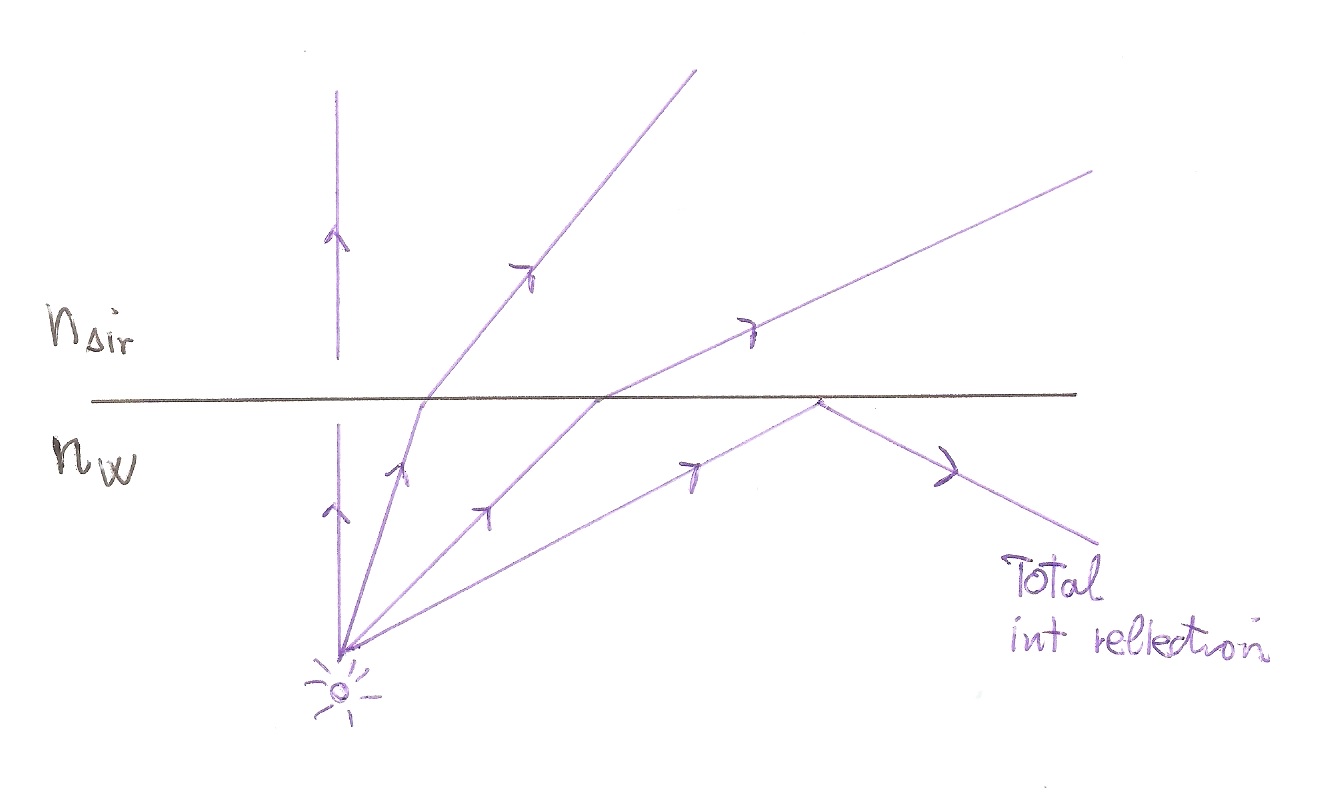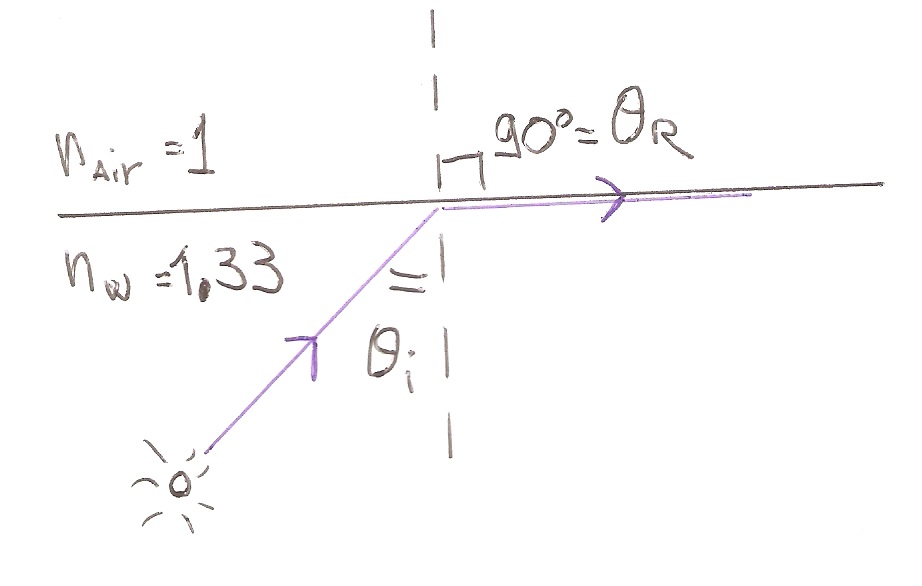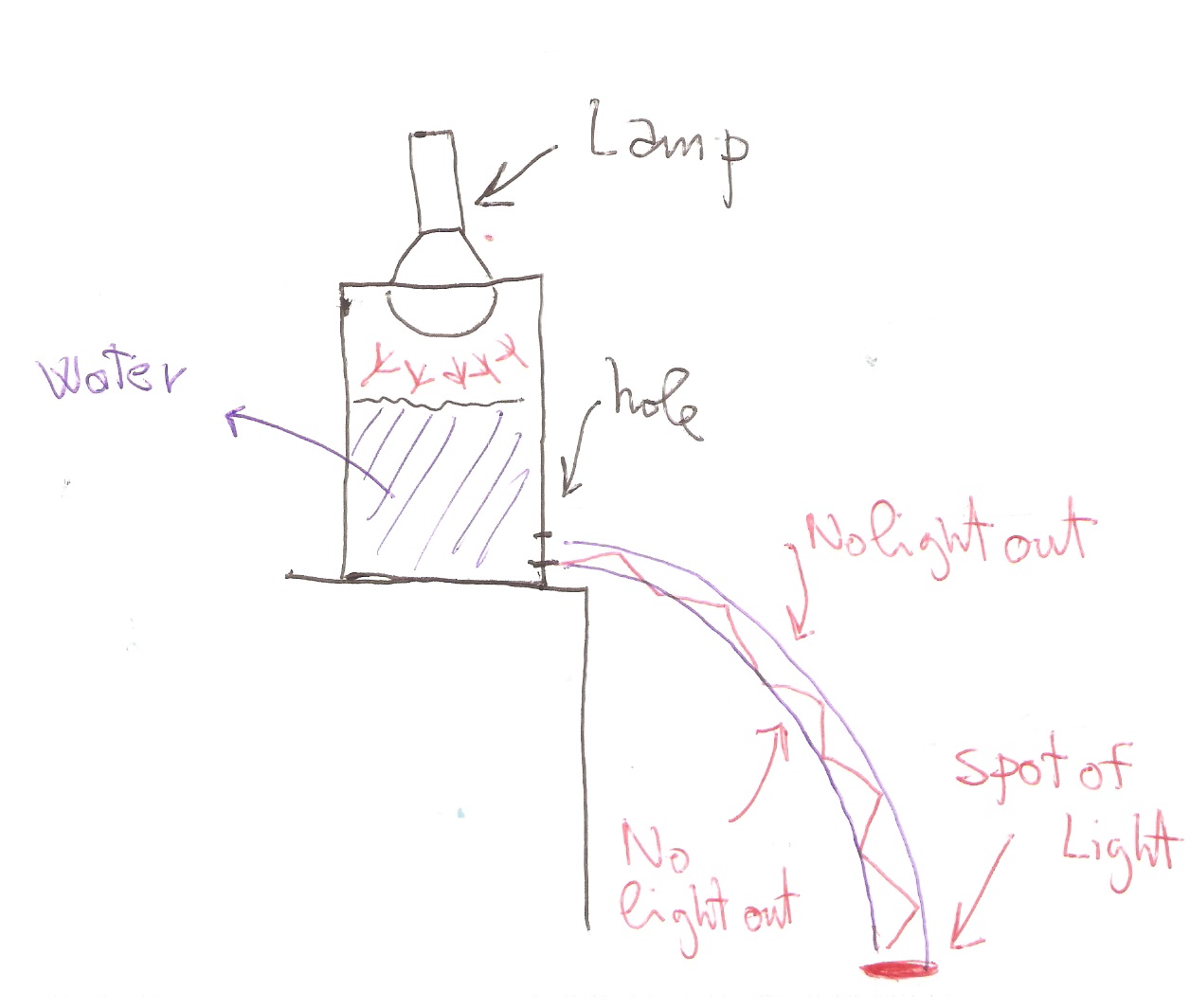Question #77ea8
1 Answer
Light coming from a medium of higher refractive index into one of lower refractive index can suffer the effect of Total Internal Reflection:

As you can see the beam coming from water is heavily bent (apart for the horizontal one) passing the interface into air (it is the same thing that happens when you look, in a glass of water, at a stick half in the water and half in the air it appears...bent!). At a certain point the bending can be so severe that no light can emerge into air anymore!
To study this we can use Snell's Law which relates the angles of incidence and refraction and the refractive indices of the two media:
In case of water we have:

At a certain incidence from water the refracted beam doesn't pass into air but is "trapped" into the interface; this is the starting incidence angle for Total Internal Reflection, or using Snell's Law:
At this particular angle of incidence (into water) light starts to get trapped inside and doesn't come out anymore. If you increase the angle of incidence the light will bounce back into water!!!
This phenomenon is used in optical fibres to "trap" light into the fibre!
You can make your own total internal reflection (or optic fibre) using a milk cartoon (with silvered internal surfaces) and water:

In the dark you should be able to see only the spot produced by light passing through your "fiber" of water and undergoing Total Internal Reflection inside it!!!!

